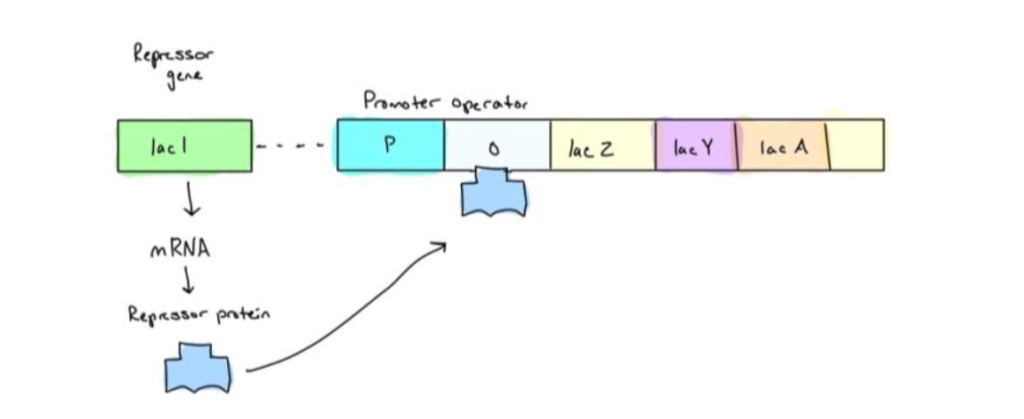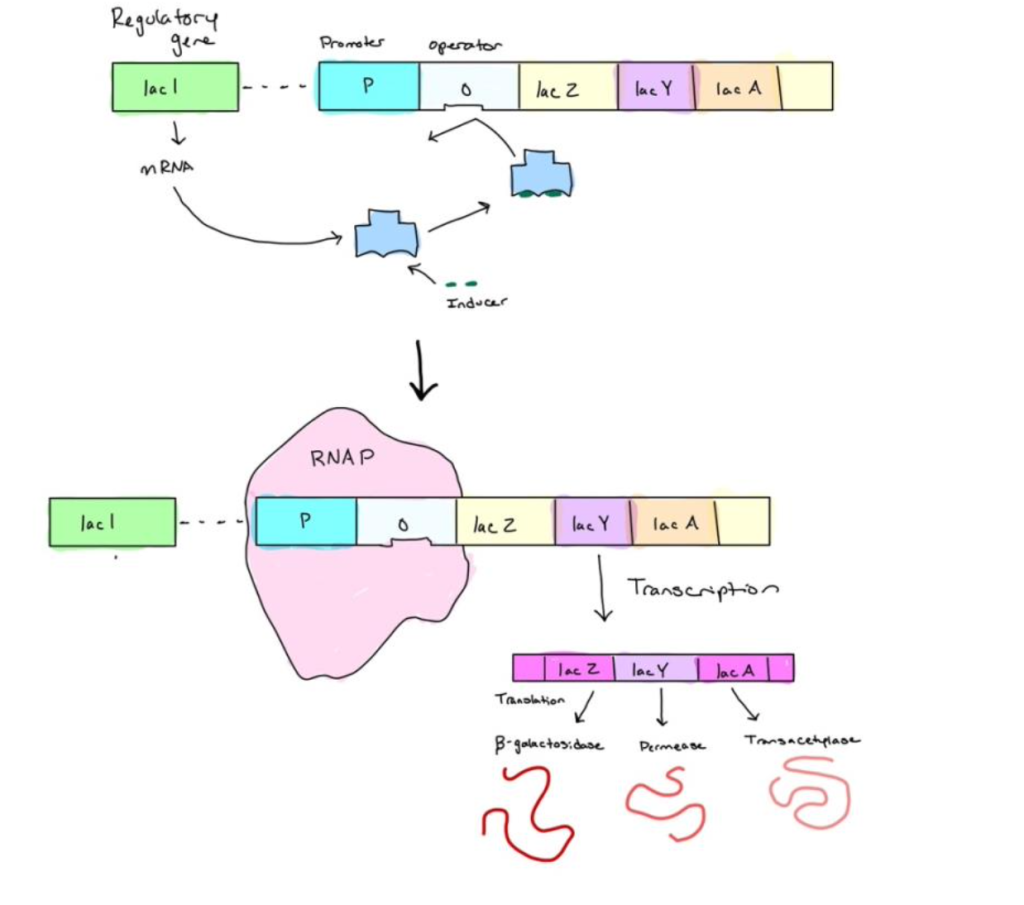1. When lactose is absent, the lacl produces a repressor which binds to the DNA of the operator, preventing gene expression.

2. When lactose is present, it acts as an inducer and binds to the repressor. Therefore, the repressor cannot bind to the operator. RNA polymerase now has access to the promoter and initiates the transcription of the three lactose-utilization genes.

3. When glucose is absent, CAP (activator) is active due to high levels of cAMP is present.

4. When glucose is absent, but lactose is present, cAMP levels are high therefore CAP is active and bound to the DNA of the promoter. CAP allows RNA Polymerase to bind to the promoter. The lac repressor is inactive and strong transcription can occur.

5. The lac operon is regulated during the transcriptional stage of gene expression.